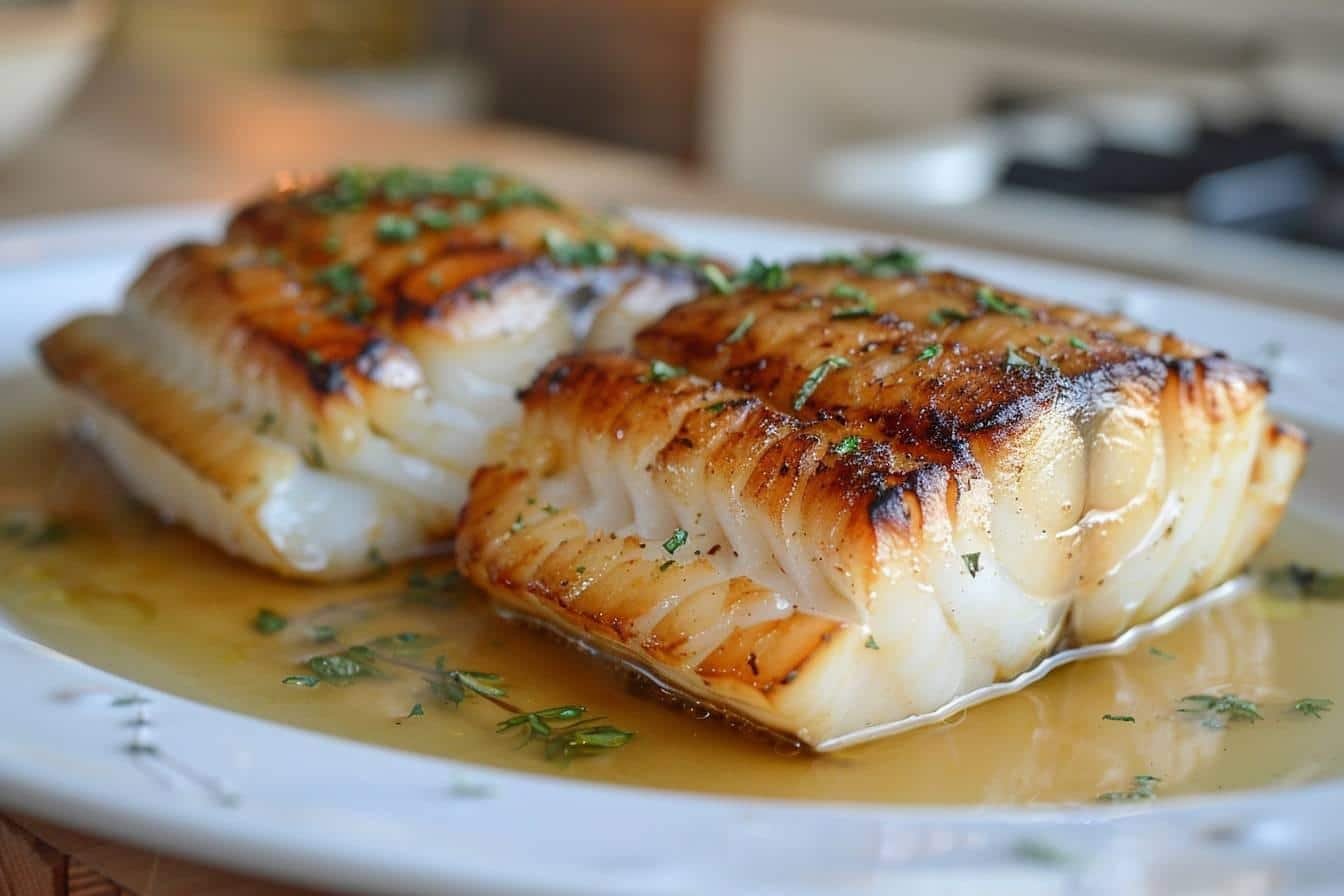The article in brief
Monkfish tail, a nutrient-rich marine delicacy, lends itself to a wide range of culinary preparations. Discover its benefits:
- Firm, white fleshwith no edges (except a central one)
- High nutritional value : low in fatrich in B vitamins and minerals
- Versatility in the kitchen : sautéed, grilled, roasted or en papillote
- Available all year round, ideal for a balanced and tasty diet
Ah, monkfish tail! That delicious fish that I so enjoy serving to my customers. As an enthusiast of seafood cuisine, I can't resist sharing my enthusiasm for this exquisite dish with you. Let me guide you through the secrets of this culinary treasure that will delight your taste buds.
Discover the wonders of monkfish tail fish
Unique characteristics of monkfish
La monkfish tailalso known as anglerfish or lophius piscatorius, is a veritable jewel of the oceans. This groundfish is distinguished by its firm, lean, white flesh. One of its most prized features is the absence of bones, with the exception of a large central bone that is easy to remove.
I still remember the first time I prepared this fish. I was impressed by its unique texture and its versatility in the kitchen. It's a fish that lends itself to many preparations, just like a fine piece of meat.
Exceptional nutritional value
Monkfish tail is not only delicious, it's also excellent for your health. It is particularly low in fat, with only 0.79% of fat. On the other hand, it is packed with essential nutrients:
- Rich in B vitamins
- Important source of minerals (phosphorus, magnesium, iodine, iron)
These nutritional qualities make them an ideal choice for those looking to combine tasty pleasure with a balanced diet. What's more, if you enjoy nutrient-rich seafood, I also recommend that you discover nutritional benefits and tips for eating emerald oysters.
Origin and availability
Monkfish is mainly caught in the north-east Atlantic. In Brittany, it is often caught by local artisanal fishermen. Good news for anglers: this fish is available all year round! So you can enjoy monkfish tail whatever the season.
The art of preparing and cooking monkfish tail
Preparation techniques
Preparing monkfish tail requires a bit of know-how, but nothing insurmountable. Here are a few tips I often give my customers:
- Remove the skin before cooking
- Cut the meat into fillets, medallions or keep the whole tail, depending on your recipe.
- Allow around 1 kg for 2-3 people (monkfish loses 50-60% of its weight during cooking).
A professional tip: to retain all the flavour and softness of the meat, opt for quick cooking. For medallions, allow just 1 to 2 minutes per side.
A variety of cooking methods
The versatility of monkfish tail in the kitchen is impressive. You can prepare it in a multitude of ways:
| Cooking method | Approximate cooking time |
|---|---|
| Sautée | 3-4 minutes |
| Grilled | 4-5 minutes per side |
| Oven-roasted | 15-20 minutes at 180°C |
| Steaming | 8-10 minutes |
| Pochée | 10-12 minutes |
| En papillote | 15-18 minutes in the oven at 200°C |
My favourite method? Pan-frying with a knob of butter. The taste is simply divine!
Classic recipes and side dishes
Among the most popular recipes are monkfish in Armorican sauce, curry sauce or white wine and cream sauce. Personally, I'm particularly partial to monkfish in white wine - it's a real treat! Don't hesitate to serve it with a variety of vegetables or lardons for an explosion of flavours on the palate.
A word of advice: monkfish tail goes wonderfully well with a white wine sauce. It's a classic that never disappoints.

Practical advice on buying and storing
Choosing your monkfish tail
When buying fish, look for freshness. The flesh should be firm and free of unpleasant odours. The guide price generally varies between €35 and €50 per kilo, depending on the cut. It's a worthwhile investment, believe me!
A funny anecdote: one day, a customer asked me why monkfish was so expensive. I laughingly explained that it was the white fish caviar. Since then, it's become a recurring joke in our fish counter.
Optimum preservation
To preserve the quality of your monkfish tail, here are a few golden rules:
- In the fridge: use within 48 hours maximum
- In the freezer: you can keep it for 3 to 4 months
Remember to wrap the fish well before freezing to avoid freezer burn. And above all, defrost it slowly in the fridge to preserve its texture.
As a passionate professional, I can only encourage you to explore the delights of monkfish tail. It's a fish that really deserves to be discovered and appreciated. So don't hesitate any longer and let yourself be tempted by this culinary marvel. Bon appétit!
External sources :
